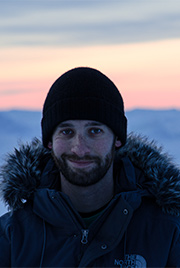Photographic evidence that an island is worth protecting
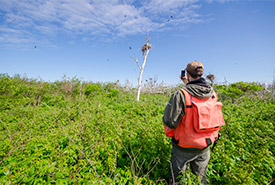
Josh Noseworthy taking a photo of Governor's Island, PEI. (Photo by Sean Landsman)
The Nature Conservancy of Canada (NCC), as I’m sure the readers of this blog already know, plays a crucial role in conservation efforts across Canada. Through hard work and determination, NCC keeps ecologically important lands in their natural state for the long term.
Arguably, no province needs NCC’s presence as much as Prince Edward Island., where more than 90 per cent of the land is privately owned. According to data provided by Environment Canada from 2013, more than 95 per cent of terrestrial land is unprotected in PEI. This is why the presence of organizations such as the Nature Conservancy of Canada are much needed and welcomed if we desire to keep natural areas free of development. It should also be noted that, along with the NCC, the Island Nature Trust is actively working to reduce the percentage of unprotected land.
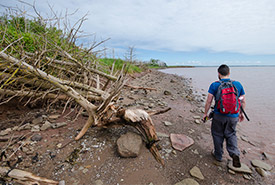
Mitchell MacMillan walks along the shoreline of Governor's Island, PEI (Photo by Sean Landsman)
PEI is home to several ecologically important biomes, including, but certainly not limited to, wetlands, saltwater marshes, old-growth forests and barrier sand dunes. Many of these areas are home to shorebirds, migratory songbirds, various mammal species, remnants of Acadian forests and rare plant species.
At the entrance to Charlottetown Harbour lies one of these ecologically sensitive places: Governor’s Island. This site has an interesting history and has been used to various degrees over the years, including as a potential retreat for followers of evangelist Billy Graham (an airstrip was built and trailers brought over from PEI to accommodate guests!). It was also one of the first parcels of Canadian land owned by a woman.
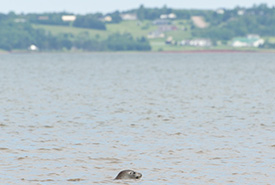
A seal in the Northumberland Strait (Photo by Sean Landsman)
I had the pleasure of visiting Governor’s Island with NCC staff in late June. The ride across Charlottetown Harbour and through a part of the Northumberland Strait in our little Boston Whaler was bumpy. As we approached the island and entered calmer waters, lumbering around on shore (and plunging into the surf) were a multitude of seals. These seals constitute a fairly large colony of approximately 300 individuals.
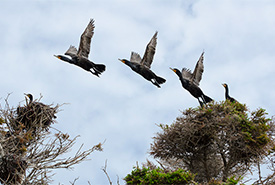
A composite image of a cormorant taking flight. (Photo by Sean Landsman)
But what really caught my eye was the backdrop of double-crested cormorants flying in the sky: thousands upon thousands of them!
Throw in a dash of bald eagles and a dollop of great blue herons and you had one awesome mixture of big birds. The scene looked decidedly prehistoric, especially with so many dead trees (likely killed by the damaging effects of acidic cormorant poop) contrasting against the bright green vegetation.
Those of you that have been around fish-eating birds may bethinking, "Bet it smelled bad." Well, that is absolutely correct, but really not as bad as I was expecting. And for anyone else wondering, no I was not pooped on; my hat, shirt and pants escaped unharmed.
Governor’s Island is a large rookery for breeding double-crested cormorants and great blue herons. It also serves as breeding habitat for migratory songbirds such as yellow warblers and common yellowthroats.
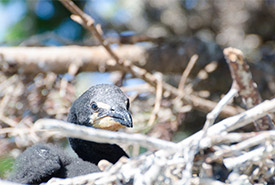
Cormorant chick (Photo by Sean Landsman)
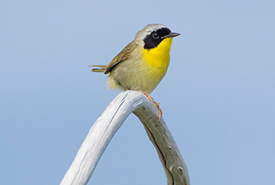
Common yellowthroat (Photo by Sean Landsman)
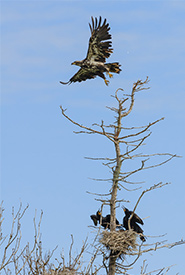
Juvenile eagle and cormorants (Photo by Sean Landsman)
During my outing with NCC, I also noticed several juvenile eagles (as well as adults) perched in trees above cormorant nests. I presume many of these juveniles were bulking up on fledgling cormorants. These young cormorant chicks provide important sustenance for developing avian predators like bald eagles.
Overall, I was impressed with the abundance of life on Governor’s Island. Equally as impressive was the dedication that NCC staff showed as they trudged through bug-filled marshes and prickly wild rose bushes to execute their field surveys. PEI land is lucky to have stewards like NCC and I’m looking forward to sharing more adventures from the field in future posts to Land Lines.

